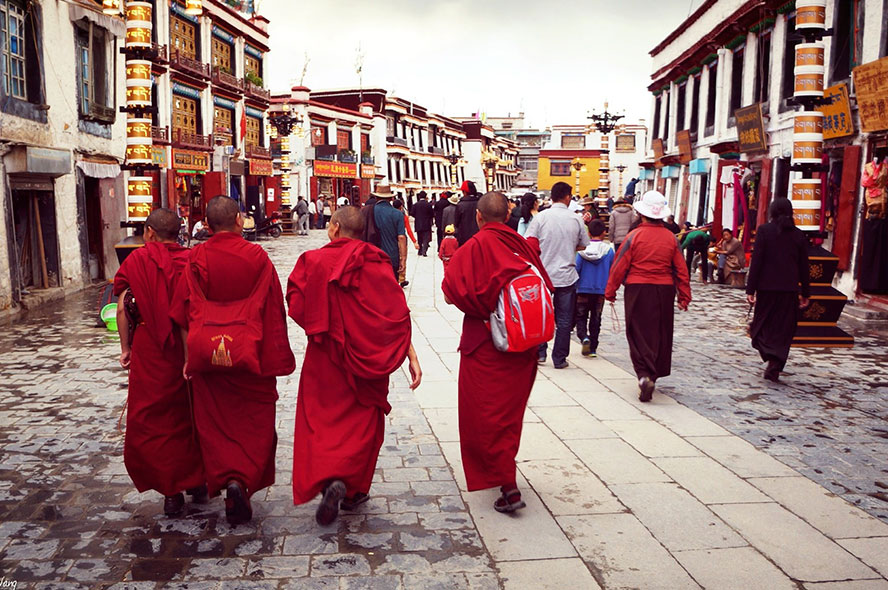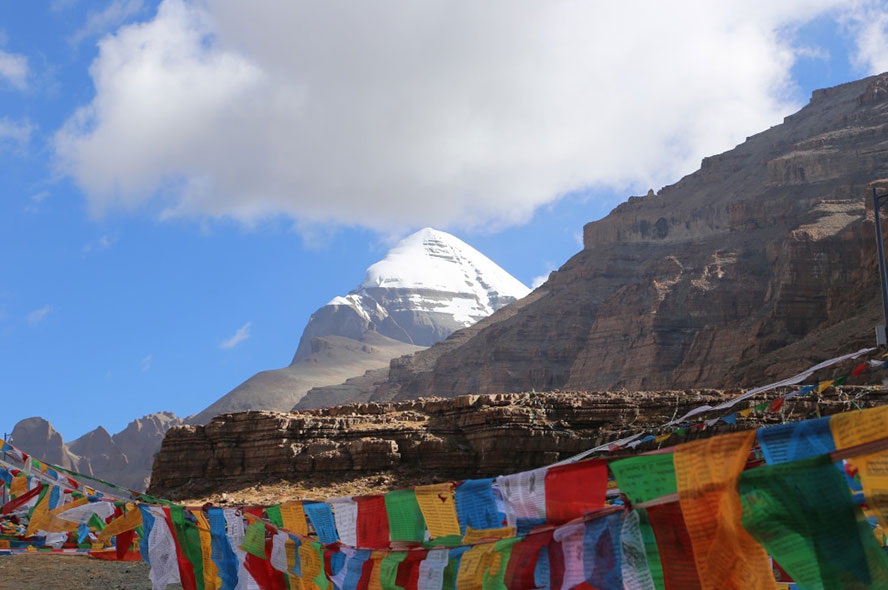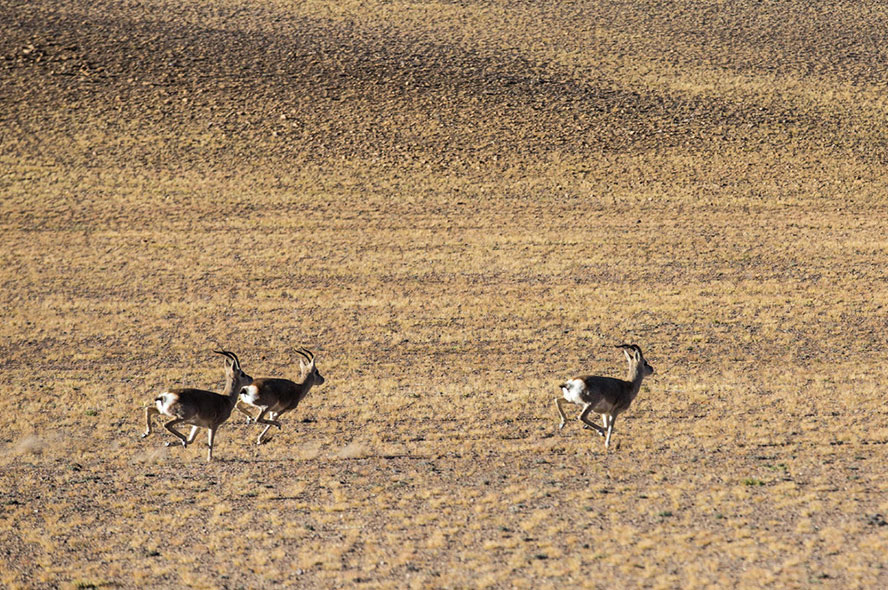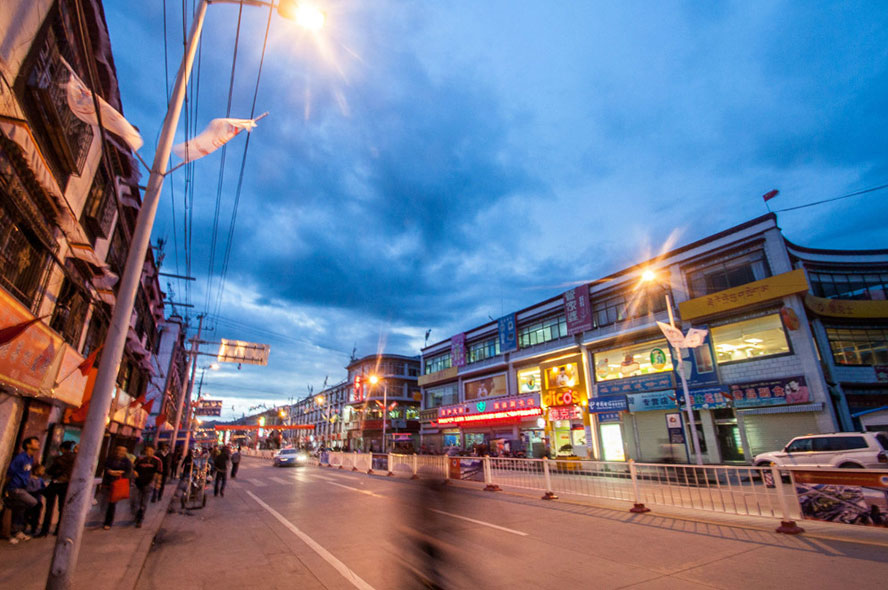“Lhasa” means “the place where God lives” in Tibetan language. Known as the "City of Sunshine", Lhasa is a holy city for not only Tibetans but also for people from all over the world. It is a mysterious place. Be it the Potala Palace, the Jokhang Temple, the Barkhor Street, or the Norbulingka Summer Palace, there is always such a place in Tibet that can touch your heart and become the home for your soul.
The altitude of Lhasa and the altitude sickness are the most concerned and worried issues for tourists who have never been to Tibet before. This article will give detailed information about these concerns and we hope that you will have a correct understanding of the altitude of Lhasa and the altitude sickness after reading the full text.
Altitude of downtown Lhasa
Average altitude of Lhasa is 3,660 meters. The terrain in the city is flat and there is no huge altitude fluctuation. The altitudes of major attractions in Lhasa are as follows:
Altitude of the Potala Palace - 3760 meters
The Potala Palace is located on the Red Hill in the northwest of Lhasa. The building is 117 meters high, so the altitude of Potala Palace is the highest in downtown Lhasa. We will normally arrange for tourists to visit the Potala Palace on the second or the third day after arriving in Tibet, so that you can have the time to adapt to the plateau climate better.
Altitude of the Jokhang Temple - 3650 meters
Located in the center of old area of Lhasa, Jokhang Temple is a Tibetan Buddhist monastery. The buildings in Jokhang Temple are not high. Therefore, many people will choose Jokhang Temple as their first destination to travel in Lhasa.
Altitude of the Barkhor Street - 3650 meters
Surrounding the Jokhang Temple, Barkhor Street is an ancient round street where tourists can buy souvenirs. As a famous kora road and commercial center in Lhasa, it is called “the Holy Road” by Tibetans. This is also the place where tourists can feel the strongest Lhasa atmosphere after they arrive in this city.
Altitude of the Drepung Monastery - 3700 meters
Drepung Monastery is at the foot of Mt. Gephel in the western suburb of Lhasa. The entire temple is large in scale, with white buildings covering the whole mountainside. Looked from far distance, the temple is just like a huge rice heap. Visiting the Drepung Monastery is generally arranged on the second day after tourists arrive in Lhasa.
Altitude of the Sera Monastery - 3700 meters
Sera Monastery is located at the foot of the Serawoze Mountain of the northern suburb of Lhasa. It is a little higher than downtown Lhasa in terms of altitude and tourists need to climb the mountain before visiting the temple. Therefore, tourists are not recommended to go to the Sera Monastery immediately after arriving in Lhasa. They had better go there after they have adjusted to the altitude of Lhasa.
Altitude of the Norbulingka Summer Palace- 3650 meters
Norbulingka is a Tibetan-style garden. While the Potala Palace is called the “Winter Palace”, Norbulingka is the “Summer Palace” for being a wonderful summer resort. Tourists can go there the first day after arriving in Lhasa to enjoy its pleasant scenery.
Altitude of Lhasa Gongga Airport - 3658 meters
Lhasa Gongga Airport is located on the south bank of the Yarlung Zangbo River and is 60 kilometers away from downtown Lhasa. Although the terrain is flat, the altitude here is still relatively high for tourists. So tourists should try to keep a peaceful mind and have a good rest after arriving at the hotels in downtown. Strenuous activities such as climbing mountains are not recommended to do on the first day to this city. You can go to the Barkhor Street to enjoy the sunshine and try some Tibetan food there.
Altitude of the Lhasa Railway Station - 3641 meters
Lhasa Railway Station is located on the south bank of the Lhasa River, right opposite to the Drepung Monastery. The altitude here is about the same as the altitude of Lhasa, so you can get used to the altitude of downtown Lhasa soon after you get there.
Symptoms of the altitude sickness
Symptoms of the altitude sickness that may happen to flight passengers
Although it takes a short time to get to Lhasa by flights, there will be huge altitude rises during this period. Therefore, tourists who take flights to Lhasa will possibly have symptoms such as dizziness, reduced brain oxygen, and shortness of breath, which are just like the symptoms that may appear after riding a roller coaster. This is because that they haven’t get used to the air in the 3,670-meter Lhasa. Oxygen content in the air is low because of the high altitude and less vegetation. It is normal for tourists to have these symptoms and there won’t be any dangers. So there is no need to worry too much about this.
You should try to keep a stable mentality and steady breathing after getting off the plane. Get some rest on the tour bus after the tour guide and the driver pick you up. Do as less activities as possible. In this way, your body will gradually adapt to the environment, and the altitude sickness will be relieved in 1-3 days.
Symptoms of the altitude sickness that may happen to train passengers
It takes a long time to get to Lhasa by trains. The altitude will gradually increase from Xining. Some people will have mild symptoms of altitude sickness while taking the train, such as slight dizziness and insomnia. These symptoms may not get worse, but they may last all the time until you get off the train. These are normal phenomenon for people who enter Tibet for the first time. And the symptoms will get relieved or will disappear 2-3 days later.
Of course, there are also tourists who wouldn't have such symptoms while taking the train. And during the daytime in Lhasa, they wouldn’t feel uncomfortable at all, either. However, they might have severe headache and dizziness at nights, and they are also unable to fall asleep. At this time, a good environment for rest will be much helpful. If you have such symptoms, don't be panic and try to contact your guided tour immediately, who will come to help you at once.
Symptoms of the altitude sickness that may occur within three days after arriving in Lhasa
After arriving in Lhasa, we will usually arrange for you to visit attractions around Lhasa. Attractions of high altitude such as the Sera Monastery and Potala Palace will be arranged on the second or the third day. Symptoms like dizziness, insomnia, and headaches can be relieved during the first three days. And altitude sickness will gradually disappear as well. You will feel a sense of satisfy because of Tibetan people's enthusiasm, the warm sunshine, and exquisite temples and buildings there, and a happy mood will also be good for relieving the altitude sickness.
How to treat the altitude sickness after arriving in Lhasa?
Psychological prevention
It is said that altitude sickness will occur more quickly and will last longer if you keep thinking about it. While if you care little about it, the altitude sickness will disappear soon. Although such statement is not absolutely correct, a healthy and positive attitude will definitely be helpful for relieving altitude sickness. And a passive mind won't be helpful at all. (How to Treat Altitude Sickness)
Don't be panic when you have altitude sickness symptoms. Firstly, you should tell your tour guide and driver about your health condition. Then they will give you advice according to your symptoms. If the condition is severe, you need to seek medical treatment promptly. In addition, oxygen supply equipment is normally available in places for accommodation. And there are also a certain amount of oxygen supply equipment on the tour bus. Yet you should try not to rely too much on the equipment. A simple rest is the best way to relieve altitude sickness, and it will also be beneficial to the tour in the next following days.
Non-medical treatment for altitude sickness after arriving in Lhasa
Keep the following tips in mind and the altitude sickness will disappear soon.
1. Walk slowly and don’t do strenuous exercise. You can consume less oxygen by walking in a slow pace. If you already have altitude sickness and you still do strenuous exercise or activities, you will consume more oxygen. And finally, the altitude sickness will get worse.
2. Take a bath three days after arriving in Lhasa. Firstly, taking a bath is originally an activity which will consume oxygen easily. Secondly, you will easily catch a cold if you take a bath at high-altitude places, and a cold can aggravate the altitude sickness.
3. Drink plenty of water. The weather in Lhasa is dry, and drinking plenty of water will be helpful for you to adjust to the weather. Sometimes if you get up early in the morning, you may find that there is blood in your nasal mucus, and that’s one of the phenomenon that can prove the weather in Tibet is dry.
4. Keep warm. We have passages that will give you suggestions as to what to wear in Lhasa in different time of the year. It is not recommended to dress little just for a beautiful appearance. Keeping warm to avoid of catching a cold is the top priority for a Tibet tour.
Medical treatment
Many tourists will prepare some medicines such as Rhodiola that can prevent altitude sickness before going to Tibet. They will also buy medicines such as Gaoyuan’an for relieving altitude sickness after they arrive in Tibet. Although these medicines can be helpful, you should consult your doctor about the medicines detailedly when you buy them and take them carefully according to the instructions of doctor.
Oxygen treatment.
Oxygen tanks in different sizes are sold in all drug stores in Tibet. Receiving oxygen from oxygen tanks can reduce symptoms like headaches temporarily. Yet inhaling oxygen for a long time can’t solve the discomfort. Therefore, you shouldn’t rely too much on the oxygen tanks, but should gradually adapt to the changes caused by high altitude.
Infusion treatment.
When symptoms such as headaches, vomiting, and dizziness occur, you should go to the hospital for treatment. And glucose injection is a normal therapy for altitude sickness.
For those who have the concern that they might get serious altitude sickness if they go to Lhasa directly, they are suggested to choose the low-altitude Nyingchi tour route. From mid-March to mid-April, Nyingchi will become a fairyland because of the beautiful peach blossoms at the river banks, villages, mountains, farming fields, and valleys, etc. If you go there during this period, you can also join the local people to celebrate the Nyingchi Peach Blossom Festival, which is one of the greatest events in Tibet.








































 Data in submission...
Data in submission...